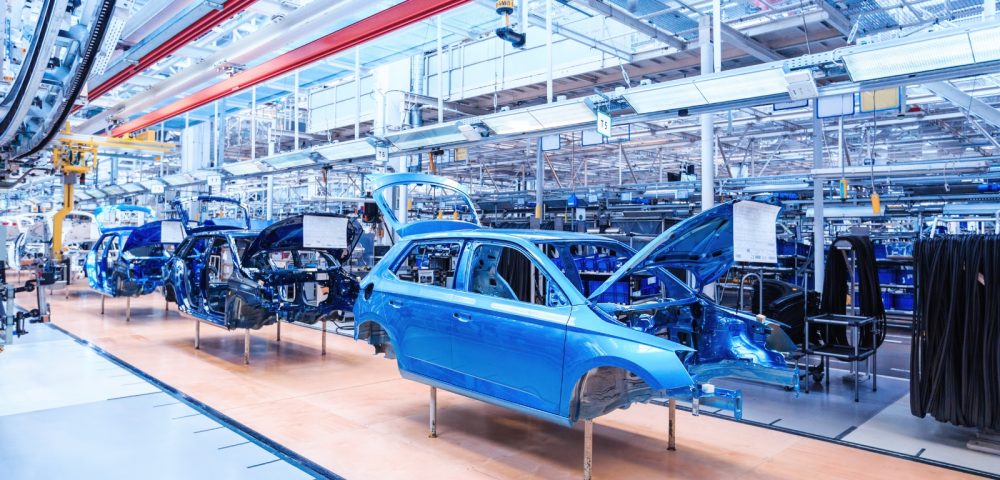This article covers seven alarming signs that manufacturing technology needs a good revamping.
Why Manufacturing Tech Needs a Major Rethink

Disconnected Machines and Systems
Instead of one unified view, manufacturers have to deal with scattered puzzle pieces. This delay in coordination hurts productivity and leads to confusion on the floor. As more tech gets added without smart integration, the gap widens.
However, manufacturers cannot afford to stay blind to these gaps because real-time coordination now decides whether they meet deadlines or miss big opportunities.
Cybersecurity Challenges
As noticed, many manufacturers still use outdated software that has not been patched for years. Some even connect machines to the internet without locking down access. That is similar to leaving factory doors wide open overnight. One attack can freeze production, expose customer data, or cost thousands in damage control.
As more devices connect to networks, the risk grows. It is high time manufacturers need to stop assuming they are too small to be targeted and start building smarter defences.
Quality Issues Keep Repeating
Production teams tend to patch up problems temporarily, but without proper tools to track patterns, they miss what is causing the trouble. That leads to wasted time, more rework, and frustrated customers. If inspections still rely on handwritten logs or outdated checklists, errors slip through easily.
Each repeated mistake means lost money and weaker trust in the brand.
Manufacturers Still Believe in Manual Processes
In a world full of automation, many factories still depend on human hands for jobs machines can easily handle. Workers walk around recording data on clipboards, entering it later into slow systems. That ruins hours that could go to real improvements.
Moreover, manual methods raise the risk of human error, especially when people feel tired or rushed. Some manufacturers hold onto these habits because it has become a routine for them.
But that mindset limits progress. Machines do not get tired, and digital systems do not forget. It is time to stop fearing change and start using tech to do better work faster.
Lack of Real-Time Visibility
Managers do not know when machines slow down or when materials run low. That means small problems grow before anyone notices. Real-time visibility helps teams spot issues early and fix them before they turn into bigger setbacks.
If your team still waits until end-of-day reports to react, they are already late. In a fast-moving world, waiting even a few hours can mean lost orders.
Scattered or Missing Data
When numbers hide in spreadsheets, emails, or handwritten notes, workers struggle to get a clear picture. Some data might go unnoticed, or worse, get lost forever. That leads to wrong guesses, slow decisions, and costly mistakes.
Leaders think they are following trends, but in reality, they cannot see what is occurring within. With scattered information, no one knows what is happening on the floor. Manufacturers must clean up their digital mess, connect systems, and make sure data flows smoothly.
Rising Downtime without Clear Causes
Without modern tools that track performance and alert you early, small issues go unnoticed until the line shuts down. Suddenly, production halts, deadlines slip, and costs rise. This is where people blame the operators or the machines, but the real problem is a lack of insight.
Equipment gives off signs. The problem is, no one is listening.
How to Solve These Challenges

- ERP + MES Integration
Manufacturers cannot afford confusion between planning and production anymore. When ERP and MES run separately, workers waste time double-checking orders, inventory, and machine statuses. That gap leads to delays, lost materials, and mixed-up schedules. Connecting ERP and MES fixes this mess.
It links the business side with the factory floor, so everyone works with the same live data. Managers track orders, machines report their status instantly, and operators stay on the same page. Instead of chasing updates through phone calls or emails, workers get the right info when they need it.
- Implement Predictive Maintenance Using IoT and AI
Waiting for machines to break makes no sense when smart tech can warn you first. Predictive maintenance uses sensors to watch how machines behave in real time. When something feels off, like an odd vibration or rising temperature, the system sends alerts. AI tools study patterns and tell you what is likely to go wrong before it does.
This way, teams fix problems before they stop the line. Instead of reacting to failures, they plan repairs calmly and keep production flowing. It feels almost like the machines are letting you know how they feel.
- Automate Repetitive Processes with Smart Robotics and RPA
We know that repetitive tasks drain energy, waste time, and leave room for human error. Smart factories now solve that with automation. This is where robots handle physical jobs like sorting, packing, or welding, while Robotic Process Automation (RPA) tackles digital work like entering data or sending reports.
These tools never get tired or distracted. Instead, they just do the job right every time. This way, workers spend less time on boring chores and more time solving problems or improving processes. It is like moving your manufacturing team from survival mode to smart mode.
- Strengthen Cybersecurity
Every time a manufacturer connects another device, the risk of hacking goes up. Attackers just need a weak point. If companies ignore cybersecurity, they open doors to stolen data, frozen systems, or even complete shutdowns.
Strong security starts with smart steps: limit access, update software, encrypt data, and train workers to spot threats. Adding firewalls and network monitoring tools keeps unwanted visitors out. Just like you lock your factory doors at night, you must protect digital systems during the day!
Cerexio for Best Technological Collaboration

Cerexio offers robust software platforms to take care of every process that comes under manufacturing through our Industry 4.0-powered MES, WMS, EBR systems, etc. If your current tools cannot offer what you expect, you can easily revamp your production processes to logistics using Cerexio solutions. Since our software platforms come with intensive cybersecurity measures, you do not have to worry about any breaches.
Revamping Manufacturing Processes through the Right Strategies

Your machines are only as smart as the strategy behind them. It is not about working harder; it is about upgrading how you work. If your processes feel stuck, maybe it is time to rethink and revamp the rules and strategies. Why waste resources when you can save them easily with one or a few of these advanced strategies?
FAQ about Manufacturing Technology
Yes, manufacturing is a high-tech industry. It uses advanced technologies like automation, robotics, artificial intelligence, and digital twins to improve production efficiency, precision, and innovation across sectors such as aerospace, electronics, and pharmaceuticals.
Manufacturing technology streamlines production processes through automated systems, precision tools, and data-driven operations. It enhances product quality, reduces waste, boosts efficiency, and enables mass customisation in modern industrial and factory environments.
The primary role of manufacturing technology is to improve production performance by automating tasks, increasing accuracy, reducing costs, and accelerating output. It ensures consistent quality, resource efficiency, and competitiveness in industrial operations.
